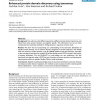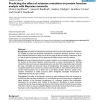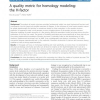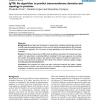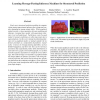508 search results - page 53 / 102 » A graphical model for protein secondary structure prediction |
BMCBI
2004
13 years 9 months ago
2004
Background: It is well known that different species have different protein domain repertoires, and indeed that some protein domains are kingdom specific. This information has not ...
BMCBI
2006
13 years 9 months ago
2006
Background: A number of methods that use both protein structural and evolutionary information are available to predict the functional consequences of missense mutations. However, ...
BMCBI
2011
13 years 4 months ago
2011
Background: The analysis of protein structures provides fundamental insight into most biochemical functions and consequently into the cause and possible treatment of diseases. As ...
BMCBI
2008
13 years 9 months ago
2008
Background: Due to their role of receptors or transporters, membrane proteins play a key role in many important biological functions. In our work we used Grammatical Inference (GI...
CVPR
2011
IEEE
13 years 5 months ago
2011
IEEE
Nearly every structured prediction problem in computer vision requires approximate inference due to large and complex dependencies among output labels. While graphical models prov...
